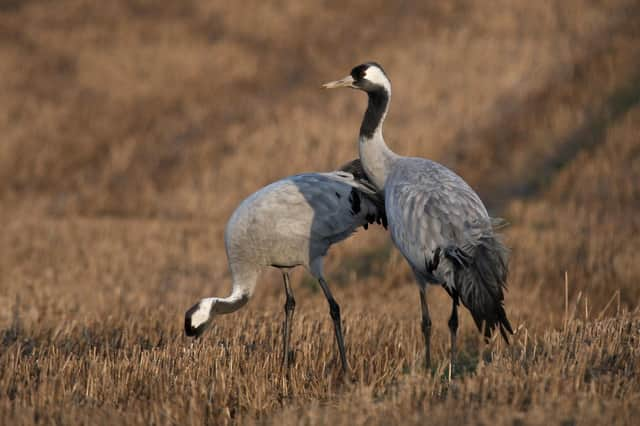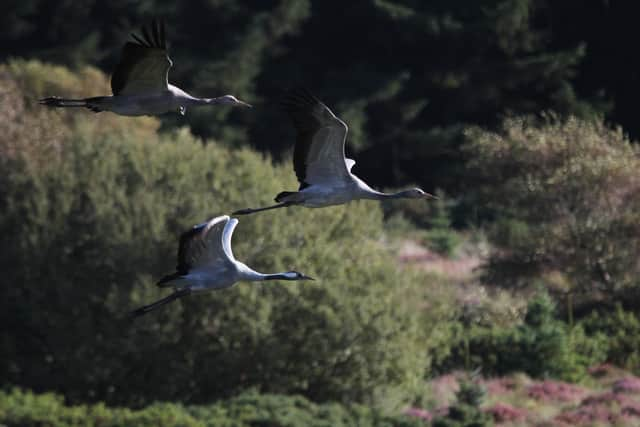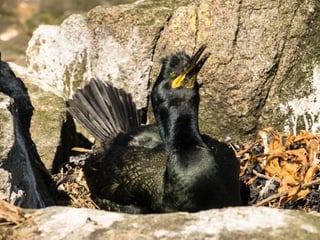Record numbers of cranes nest in Scotland during pandemic


The common crane is the UK’s tallest bird, standing up to 4ft tall, and is celebrated for its loud trumpeting calls and elegant courtship displays.
The species became extinct in the UK nearly 400 years ago but began breeding again in Scotland for the first time since the middle ages in 2012 – after having returned to England in 1979.
Advertisement
Hide AdAdvertisement
Hide AdResearch suggests there are now seven pairs of the long-legged birds nesting in Scotland, all in the north-east of the country, with a further 64 pairs south of the border.


The total UK population is now believed to number more than 200 birds – also a new record.
The most recent surveys identified two confirmed breeding pairs, which successfully raised three chicks – the highest number yet in a single year.
Five other pairs were also spotted, as well as five young birds that are thought to have spent the summer in Scotland.
The latest tally is up from just four pairs recorded the previous year.
Conservationists have welcomed the findings, which they hope means the Scottish population may be on the brink of a significant expansion.
They say work to protect and restore peat bogs and other wetlands could play a crucial role in boosting crane numbers, while also benefiting countless other wildlife species and locking up vast amounts of climate-warming carbon.
Hywel Maggs, senior conservation officer for RSPB Scotland, said: ‘’We are absolutely delighted that seven pairs of cranes were recorded in north-east Scotland in 2020.
Advertisement
Hide AdAdvertisement
Hide Ad“Covid-19 lockdown restrictions meant that usual monitoring wasn’t possible and the exact number of pairs to breed in Scotland may never be fully known.
“However, thanks to reports from local people and farmers we have managed to piece together a picture of what happened.
“Watching the return of cranes to Scotland has been a real privilege.
“That they have decided to set up home in north-east Scotland and numbers are growing shows how important some of the wilder landscapes here are.
“However, for this expansion to be sustained, we must ensure there are places for the new pairs to nest safely.
“The cranes have already nested on recently restored peatland and newly created wetland but many of the potential nest sites on peatlands and other wetlands are threatened by drainage and disturbance.
“Restoring more of these key areas would bring a myriad of benefits, including creating the habitats that newly paired cranes are looking for and ultimately could lead to many more of these elegant birds in Scotland’s skies.”
Cranes are renowned for their wooing dances; complicated displays involving bows, pirouettes and bobs, which take place between males and females each year.
Advertisement
Hide AdAdvertisement
Hide AdThe birds were once relatively common in the UK, but a combination of hunting and wetland decline saw the species disappear in the 1600s.
In Scotland, after spending several years as migratory visitors, cranes were first recorded breeding in Aberdeenshire in 2012.
Numbers remained between one and four pairs before increasing to seven in 2020.
Over this time, the Scottish birds have successfully raised 12 chicks between them, with some now approaching breeding age.
